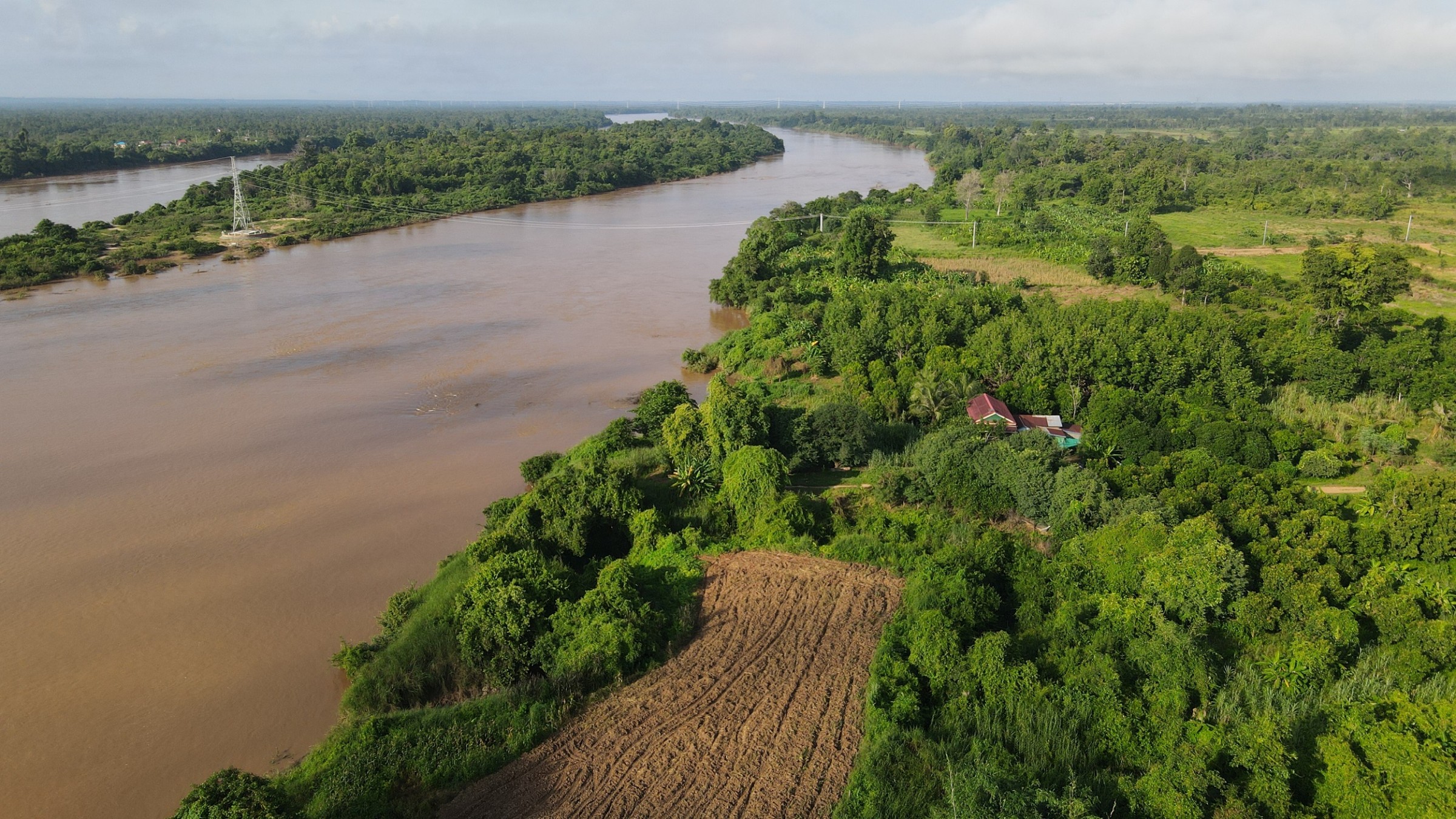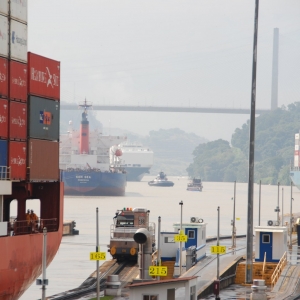Dam critics urge national governments to halt project on important Mekong tributary.

The Sekong River, a largely free-flowing tributary of the Mekong, is the site of a proposed hydropower dam. Photo courtesy of Chhut Chheana/Wonders of the Mekong
By Stefan Lovgren, special to Circle of Blue – July 13, 2023
Southeast Asia’s Mekong River, known as the most productive river system on the planet, sustains the livelihoods of tens of millions of people through fishing and farming. For years, the world’s largest inland fishery has also been under assault from a frenzy of reckless dam construction that is often driven by political and private interests without considering environmental costs.
Thirteen major dams now control the Mekong’s main stem and hundreds of lesser structures dot the broader watershed, but the most egregious current example of this ecological scorn is a small dam being built in Laos on the Sekong River, the only largely free-flowing major tributary remaining in the six-country basin.
Known as Sekong A, this dam near the Cambodia border would cut off over 90 percent of the 300-mile-long Sekong from the Mekong’s main stem, blocking migrations of numerous fish species and impeding the crucial delivery of sediments to farmlands downstream.
Despite the environmental cost it is sure to inflict, the dam, if completed, will produce a measly 86 megawatts of electricity, a small fraction of the region’s energy demand and an amount that observers say could easily be replaced by solar power.
Because of the potential harm, Brian Eyler, who monitors dam developments in the Mekong as director of the Southeast Asia program at the Stimson Center in Washington, D.C., calls Sekong A “a killer dam” and “one of the worst ideas for the Mekong.”
Biodiversity at Risk
The project has long been shrouded in secrecy and outside access to the dam site is limited. Construction, which is carried out by a Vietnamese state-owned company, Song Da 6, appears to have begun in late 2020. However, no formal construction contract was put in place. According to Eyler, the dam was initially built illegally. The Lao government, he says, was required to notify a regional river basin organization of its plans but it waited two years after starting construction to do so.
The current status of the project is unclear. Satellite images suggest that construction has not progressed in recent months and that the river is not yet closed off. The onset of the rainy season, which just began in the region, will likely pause any construction activities for several months.
If construction does proceed, the potential environmental damage is immense. The Sekong rises in the Vietnamese highlands and runs through Laos and Cambodia before joining the Mekong near the Cambodian town of Stung Treng. Along with the Sesan and Srepok, two rivers that come into Cambodia from Vietnam, it forms the critical 3S basin. Together, these three rivers deliver as much as a quarter of the Mekong’s flow and sustain a large percentage of the more than 1,000 fish species in the watershed, where close to two million tons of fish are caught every year.
The impact of dam construction on the other 3S rivers is already evident. Cambodia’s Lower Sesan 2 dam, which began operating in 2019, essentially blocked access to both the Sesan and Srepok. A study recently published in the journal Scientific Reports revealed a serious decline in fish species in those two rivers. In contrast, fish diversity improved in Sekong, the basin with the fewest dams. There the number of fish species grew from 33 to 56.
The study’s lead author, Ratha Sor of CheaSim University of Kamchaymea in Cambodia, says the findings show that a free-flowing Sekong “is vital to sustaining future food webs, biodiversity, fisheries, and food security in the Lower Mekong basin.”
Sarah Null, a Utah State University professor and study co-author, has investigated trade-offs between economic benefits and environmental costs of dam building in the 3S basin, and found that environmental impacts are usually given short shrift. “There is no better example of this than the Sekong dam,” says Null, who, like Sor, is affiliated with the USAID-supported Wonders of the Mekong project.
Politics and Alternatives
While the main Sekong River is free-flowing except for a dam near its headwaters in Vietnam, many of the river’s tributaries have been tamed. Four years ago, one of these dams, located in the same district where the Sekong A is being built, collapsed. The disaster killed at least 49 people while displacing thousands more in Laos and destroying homes and livelihoods for many Cambodians.
Vietnam’s involvement in the construction of Sekong A has a geopolitical angle. Vietnam seeks to counter the influence that China asserts over Laos, especially when it comes to hydropower development. But observers say the project threatens to tarnish Vietnam’s reputation as a regional leader in sustainable development on the Mekong River, which feeds the fertile Mekong Delta in Vietnam before emptying into the South China Sea.
In 2021, the International Union for Conservation of Nature appealed to Vietnam to terminate its work on Sekong A for fear of “serious social and economic damage to downstream countries.” The group has since intensified those efforts, arguing that halting construction would have virtually no impact on regional energy security.
Rafael Schmitt, who is the lead scientist at the Natural Capital Project at Stanford University, has studied the Mekong system for many years. He says a dam of Sekong A’s size, generating less than 100 megawatts of energy, could easily be replaced by a floating solar farm built on any number of existing hydropower reservoirs. He also points out that “there are many undeveloped dam sites in already dammed parts of the basin, and those sites could easily supply the little energy Sekong A is going to provide, with a fraction of the impacts.”
The Mekong River Commission, the inter-governmental organization set up to jointly manage the Lower Mekong River, is a potential wild card. The commission has been criticized in the past for its political weakness and limited mandate, which keeps it focused on the Mekong main stem and not the tributaries in the system. (Laos did not even notify the commission of its plans to build Sekong A.)
But the commission has become more influential in recent years, and in a surprising development Laos agreed to allow the commission to conduct a transboundary environmental impact assessment for the dam, using new guidelines that the commission recently unveiled. It will be the first such assessment carried out on a Mekong tributary. At the recent Mekong summit in Laos, the commission’s CEO, Anoulak Kittikhoun, seemed to suggest that the outcome of the dam may change as a result of the yet-to-be-carried-out assessment.
It may be too early to tell, but for critics like Eyler of the Stimson Center, the pending assessment is a hopeful sign that one of the Mekong basin’s most important rivers could continue to flow freely into the future.
An earlier version of this article incorrectly stated the legal status of Sekong A.
Stefan Lovgren is co-author of the new book Chasing Giants: In Search of the World’s Largest Freshwater Fish. A frequent contributor to National Geographic, Lovgren often writes about freshwater conservation issues. He covers the Mekong River as part of the USAID project “Wonders of the Mekong.” Follow on Instagram @mekongwonders or visit his website.




